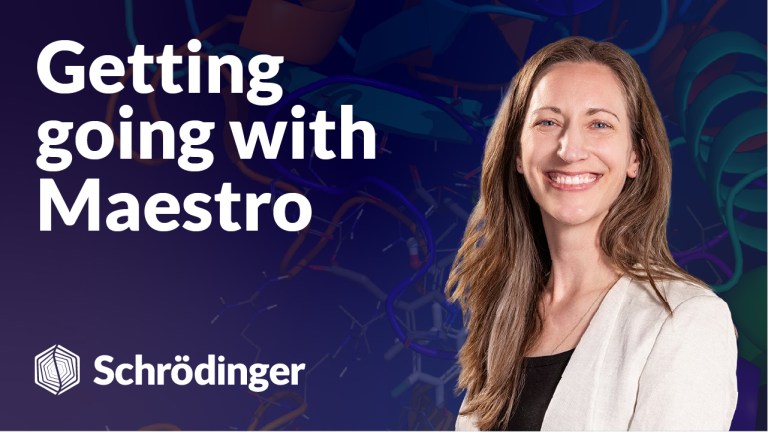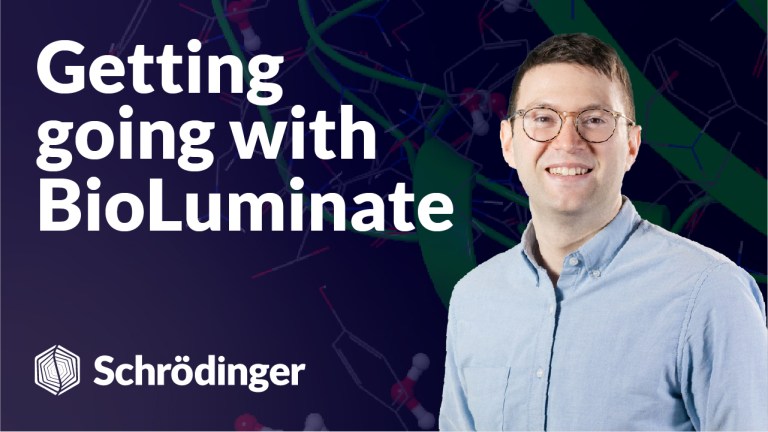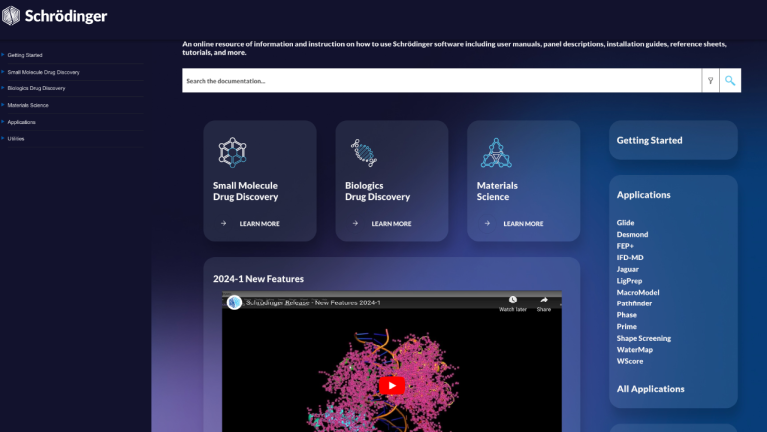Free learning resources
Quickly learn how to integrate Schrödinger technology into your research. From overviews to deep dives, you can find information about applications, workflows, and analysis here.
Quickly learn how to integrate Schrödinger technology into your research. From overviews to deep dives, you can find information about applications, workflows, and analysis here.
 Video
Life Science
Video
Life Science
 Video
Life Science
Video
Life Science
A free video series introducing the basics of using Maestro Bioluminate.
 Documentation
Life Science
Documentation
Life Science
Self-guided step-by-step introductions to various workflows with example files for getting comfortable with Schrödinger tools.
Short video overviews of specific introductory and scientific topics, including summaries of new release features.
A one-page PDF that visually describes the panel or workflow.
Basic Maestro tasks useful for medicinal chemists during idea generation and lead optimization.
Set up IFD-MD for a covalently bound ligand and visualize the results.
Set up a membrane-bound protein for IFD-MD and visualize the results.
Build and test two models for predicting aqueous solubility using a large dataset
Build a heteromultimer homology model of human hemoglobin from a bar-head goose hemoglobin structure.
Prepare, run, and analyze a free energy perturbation (FEP) simulation with a membrane-bound protein for a series of A2A inhibitors using FEP+.
Predict the pKa of organic molecules with more than one acidic functional group.
Define regions to treat with QM and with MM for a QSite calculation.
Set up a virtual screen to analyze a 1M ligand library from using Active Learning Glide.
Use Absolute Binding Free Energy calculations to enrich virtual screening results.
Create a homology model of TYK2, including a bound ligand, using the structure of JAK3 as a starting point. Then you will compare this homology model with the crystal structure for TYK2 bound to 4GIH ligand.
Explore potential energy surfaces using dynamic relaxed coordinate scans.
Level up your skill set with hands-on, online molecular modeling courses. These self-paced courses cover a range of scientific topics and include access to Schrödinger software and support.
Connect your students to industry-leading molecular modeling software through a web-based platform. Incorporate molecular modeling in the classroom.